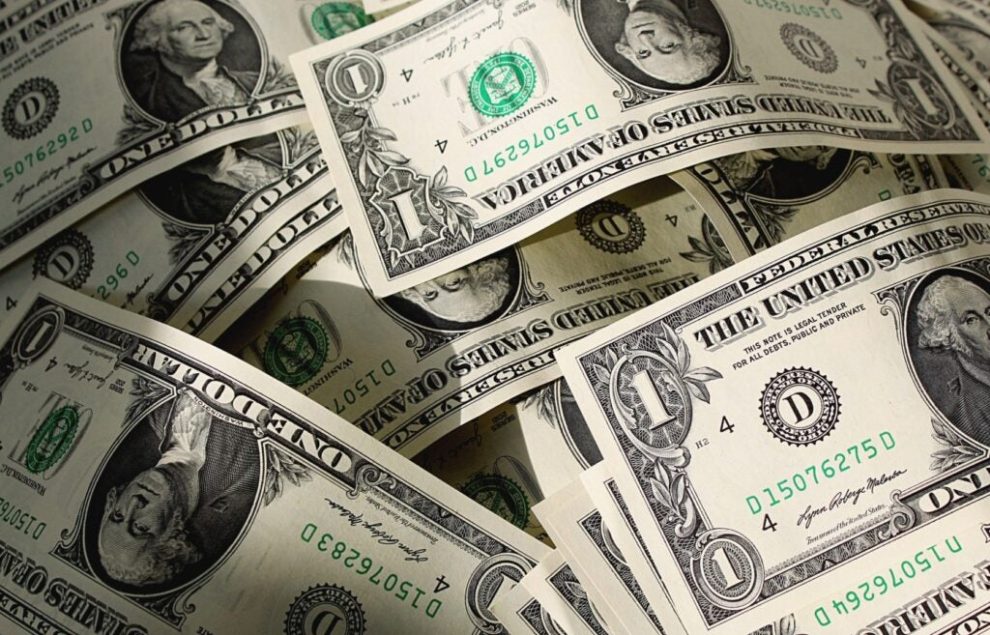Major Wall Street investment banks are divided over how the dollar will move from here, yet much clarity could be just days away as a deluge of key economic data looms.
In an outlook shared with clients last week, Wells Fargo’s economics team, led by Nick Bennenbroek, expressed a bullish short-term stance on the U.S. dollar, calling the recent wave of depreciation “tactical” rather than the beginning of a structural trend.
“We expect the U.S. dollar to rebound in the immediate period ahead,” the analysts said, suggesting the dollar will remain fundamentally supported before resuming trend strength into 2026.
Bearish Positioning Builds As Speculators Eye US Economic Weakness
Speculative net short positions against the greenback — measured across 10 major currencies and the Dollar Index (DXY) — surged to $40 billion last week, the highest level since October 2023, according to Commodity Futures Trading Commission data.
The Dollar Index, as tracked by the Invesco DB USD Index Bullish Fund ETF UUP, has dropped 8% year-to-date, reaching its most oversold levels since December 2020 last week.
Technically, it is now 5.5% below its 200-day and 4.5% below its 50-day moving averages, underscoring how aggressive the recent selloff has been.
Wells Fargo indicated that unusual dynamics are pressuring the dollar, particularly the political noise and tariff volatility emanating from the U.S.
“With the source of policy uncertainty and volatility coming out of the United States, market participants have sold dollar-denominated assets and moved away from Treasuries,” they said.
Yet, the team described this as “a transitory phenomenon,” not a fundamental reassessment of U.S. assets.
Goldman Sachs Sees Further Dollar Weakness Ahead
Over at Goldman Sachs, foreign exchange analyst Kamakshya Trivedi took the opposite side of the trade.
“Even after a swift move in recent weeks, we believe that the dollar has further to fall,” Trivedi said.
The investment bank highlights that the underperformance of U.S. assets and the reduction in global investors’ enthusiasm for unhedged dollar assets could trigger a longer-lasting decline in the greenback.
Trivedi emphasized that investors may be overestimating the impact of short-term positioning while underestimating the structural reallocation already underway.
“We are more focused on the likely shift in future allocations,” he said, citing historical parallels where changes in investor appetite led to persistent exchange rate moves.
Goldman’s concern is compounded by ongoing uncertainty around U.S. trade and monetary policy.
While President Donald Trump‘s recent statements hint at potential tariff rollbacks and efforts to reassure markets — including backing off pressure on the Fed — the bank is unconvinced these efforts will quickly restore investor confidence.
Dollar Direction Hinges On Upcoming Macro Data
The next few trading days could be decisive for the dollar’s short-term fate, with several high-impact U.S. economic reports on deck:
- Q1 2025 GDP (Wednesday): Expected to slow sharply from 2.8% in Q4 2024 to 0.4%, according to median economist consensus tracked by TradingEconomics.
- Personal Consumption Expenditure (PCE) price index (Wednesday): Fed’s preferred inflation gauge expected to cool to from 2.5% to 2.2% in March, with core PCE dropping from 2.8% to 2.6%
- April Jobs Report (Friday): Forecasts see nonfarm payrolls at 135,000, down from 228,000, with unemployment steady at 4.2%
If the data confirm a softening U.S. economy, it could validate Goldman Sachs’ bearish thesis, especially as investors price in earlier and deeper Federal Reserve rate cuts.
On the flip side, any surprise economic resilience in jobs or inflation could lend weight to Wells Fargo’s tactical dollar rebound call.
Read Next:
Photo: Shutterstock




Add Comment